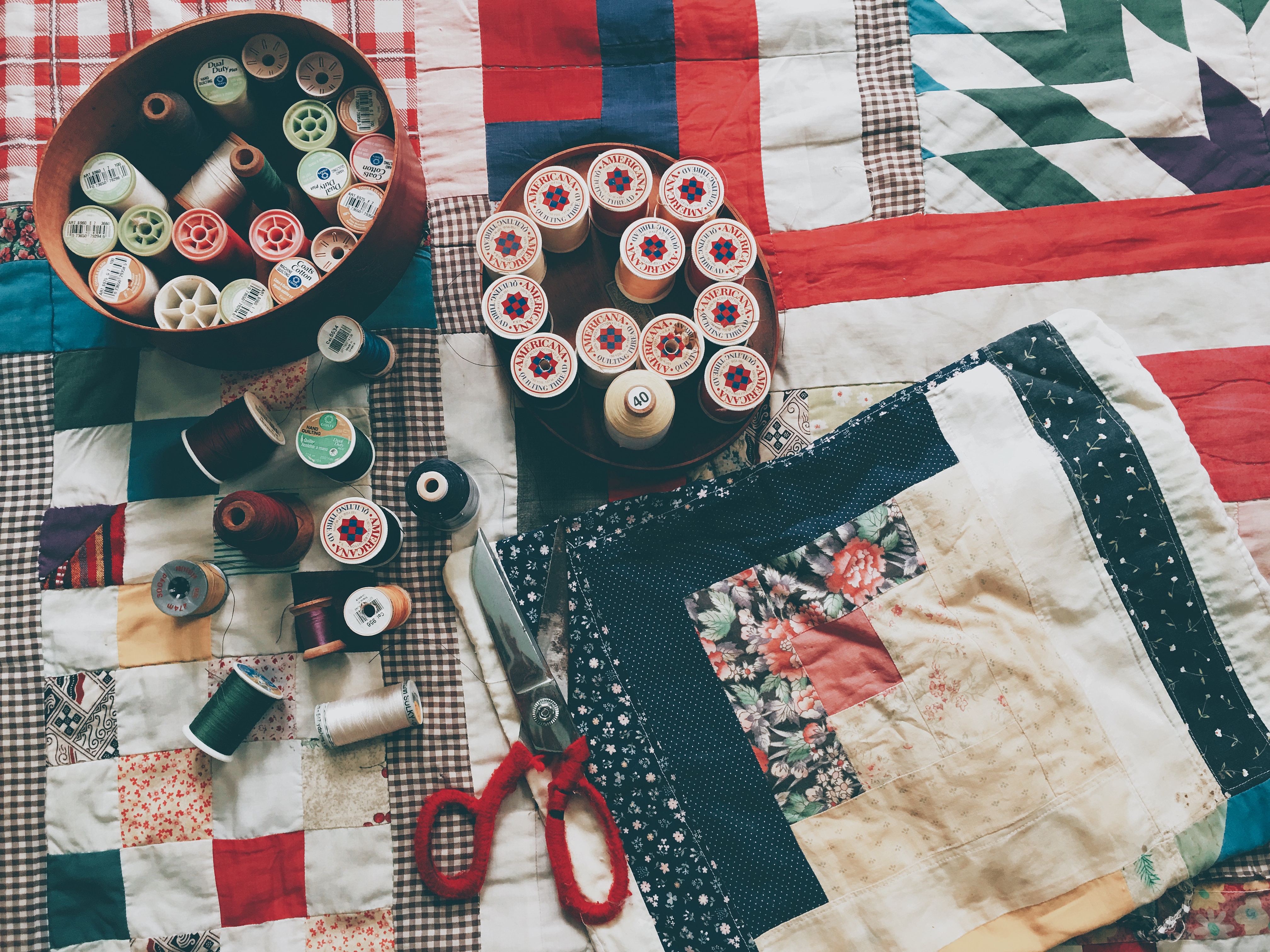The delicate patchwork, the carefully-chosen patterns, the sentimental value: quilts are a lasting piece of art and comfort.
So where did the art of quiltmaking come from, and why should you learn to make your own beautiful quilts that you can pass down for generations?
Quilting goes way, way back.
Quilting has a long history in humanity.
Quilts—the patching together of a “sandwich” of cloth, padding, cloth—are believed to go as far back as the time of the Egyptians. It’s believed quilts were used across Asia for thousands of years. Quilting in Europe became evident in the 12th century. The early settlers from Europe brought these quilt-making skills with them as they crossed the seas and landed in America.
In America, quilts initially were used only as functional items. Used on beds to keep warm and in doorways to help keep out the cold, the early settlers created these quilts for utility, not for beauty. They often didn’t have access to new fabric, so they used old clothing or other old fabric.
Eventually, quilting became an art form. Applique-style quilting became popular from the mid-1700s to mid-18-00s. However, only the wealthy had the luxury of extra time or money to partake in quilt-making as a hobby.
As the pioneers settled, towns grew, and resources became more readily available, more women of varying economic levels began to pay attention to the art-form of quilt-making.
In the mid-1800s came along the invention of the sewing machine and, with it, quicker quilting creations. Since then, the style of quilt making has transformed over the years.
Show me the money.
Today, quiltmaking in the U.S.—while relatively under the radar in popular culture—still has a devoted population of quilters, touting a pretty penny as a $3.58 billion industry.
To hand-quilt or machine-quilt… that is the question.
First things first… the three pieces of the quilting sandwich:
- The top is the beautiful quilt top, featuring the delicate designs we associate with a quilt.
- The middle layer is a padded fabric.
- The back layer is usually a solid piece of fabric that complements the colors in the quilt top.
Your decision to hand-quilt vs. machine-quilt will be entirely up to you—neither form is the “right” way to quilt.
Naturally, hand-quilting will require a larger investment of time. However, hand-quilting can be a therapeutic, relaxing process. You can even invite together a group of friends and make it a fun, friendship-building activity!
Machine-quilting can open you up to more varied embroidery techniques. These quilts will have crisper, tighter stitching, whereas hand-stitched quilts will have a more relaxed, softer feel.
Whichever route you go, your quilt is a work of art.
Quilts can heal.
While in modern-day America we don’t need quilts to cover our doorways to keep out the prairie cold, there are still multiple uses for these treasured items.
Wrap up in a cozy quilt and relax next to a fire with a good book to truly appreciate the comforts of a quilt. You can also make a quilt as a “memory box” of sorts by patching together your children’s old school, club, and camp t-shirts from over the years.
Besides personal use in the home, quilts can also be a source of healing and comfort. The Quilts of Valor Foundation uses the quilting skills of volunteers to create beautiful handmade quilts to provide to our veterans. The Ugly Quilt Sleeping Bag Project creates warm quilt sleeping bags that can be given to the homeless.
For our Minnesota-based friends, Bundles of Love brings together volunteers to quilt and sew other clothing items for newborn babies in need.
Dive deeper into the art of quilting.
Join us at Stoney Creek Farm for our Hand Quilting Class!
Join us Saturday, February 15 from 10am-12pm at our farm in Franklin, TN to learn how to hand quilt with instructor Rosetta Sommers!
Rosetta has been hand quilting with her family her entire life. She has been in many quilting bees over the years and enjoys teaching others her quilting skills.
You’ll learn the basics of quilting and take home a small project to begin your quilting journey! All supplies are included, along with a large embroidery hoop for the small quilting project.
MORE RESOURCES:
- Free Quilt Patterns from Sew Can She can help get you started.
- Quilting 101 provides tons of helpful instructions and tools for learning the art of quilting.
- Diary of A Quilter with Amy Smart is a fun blog to follow along with. Amy also shares tons of valuable quilting resources.


